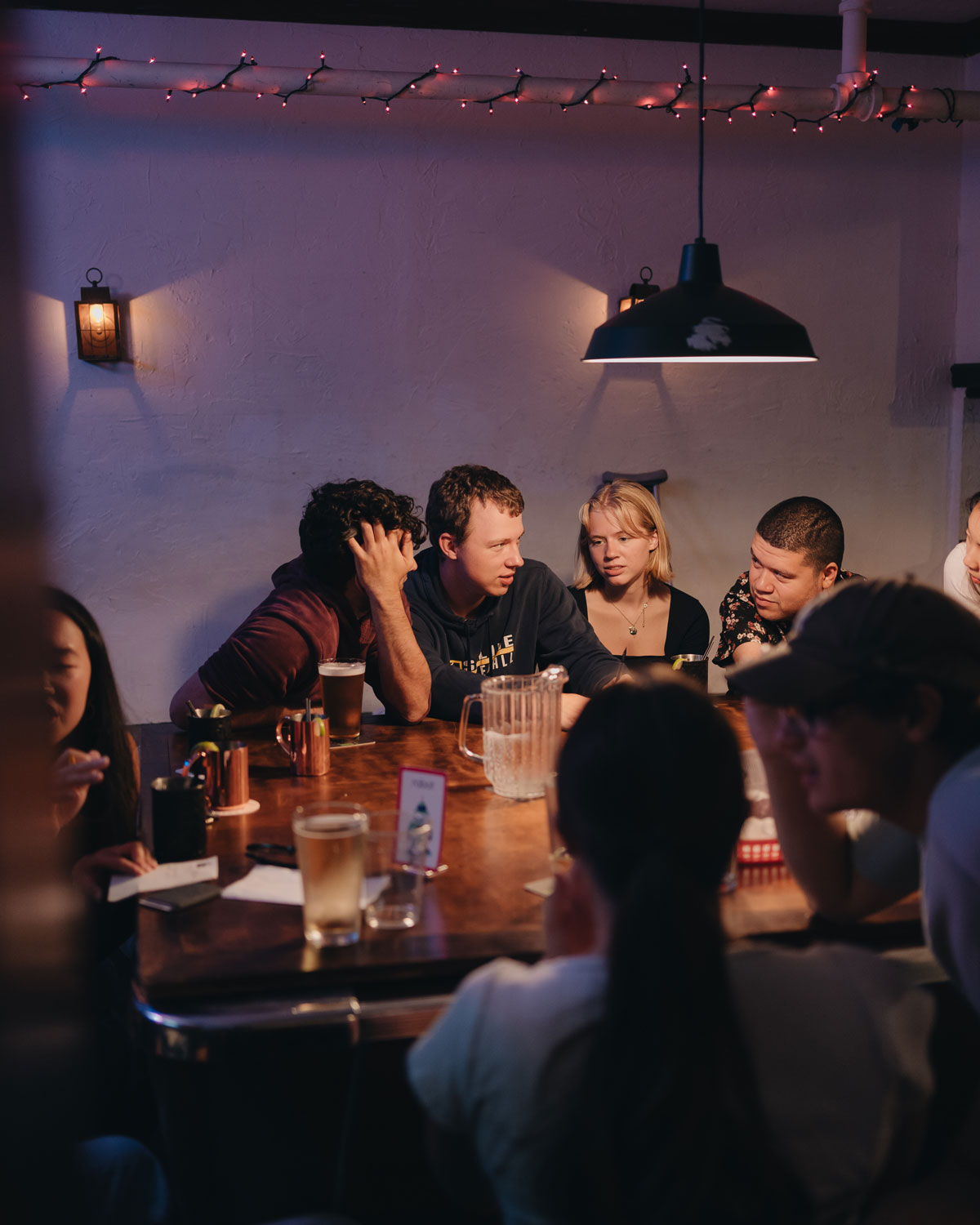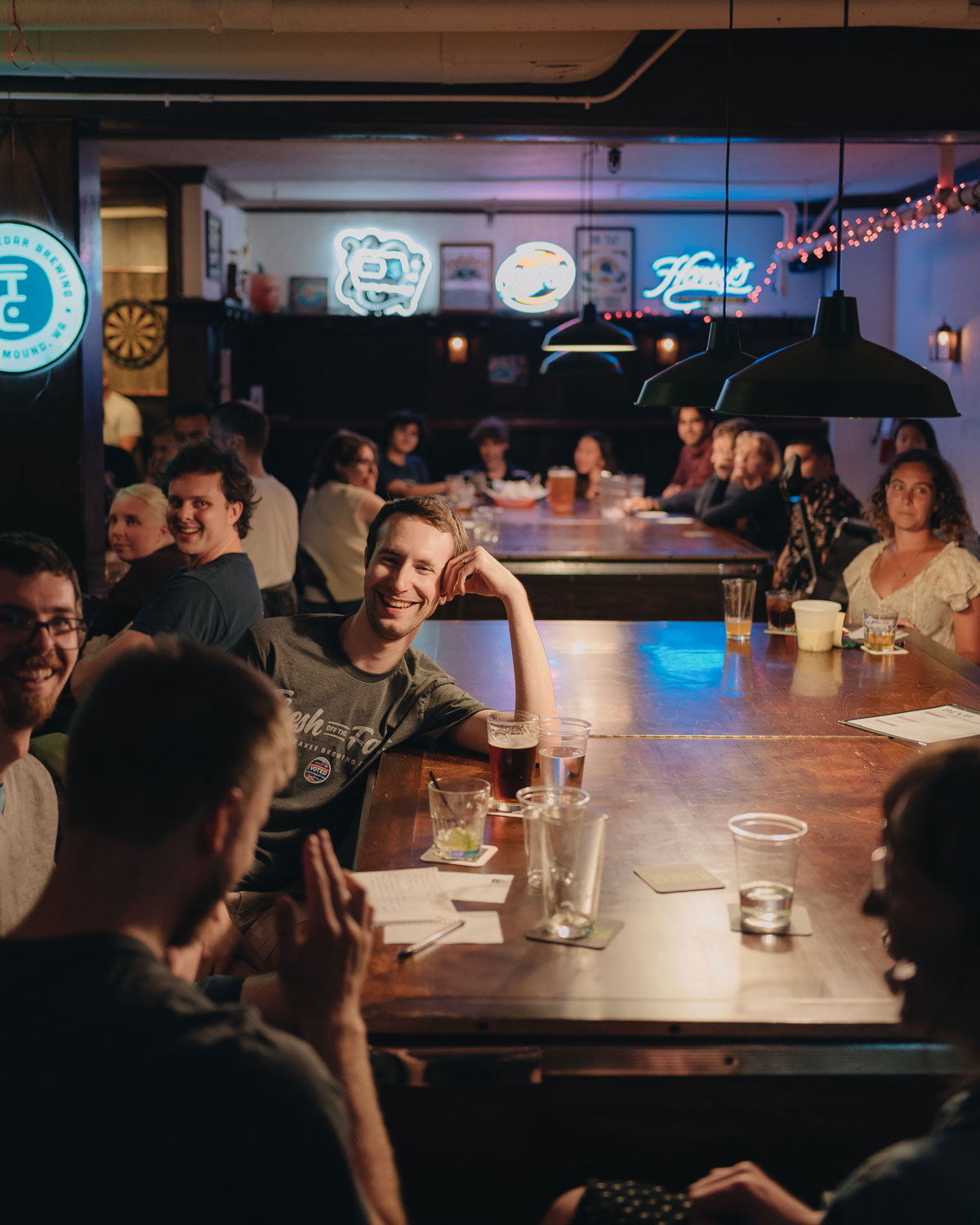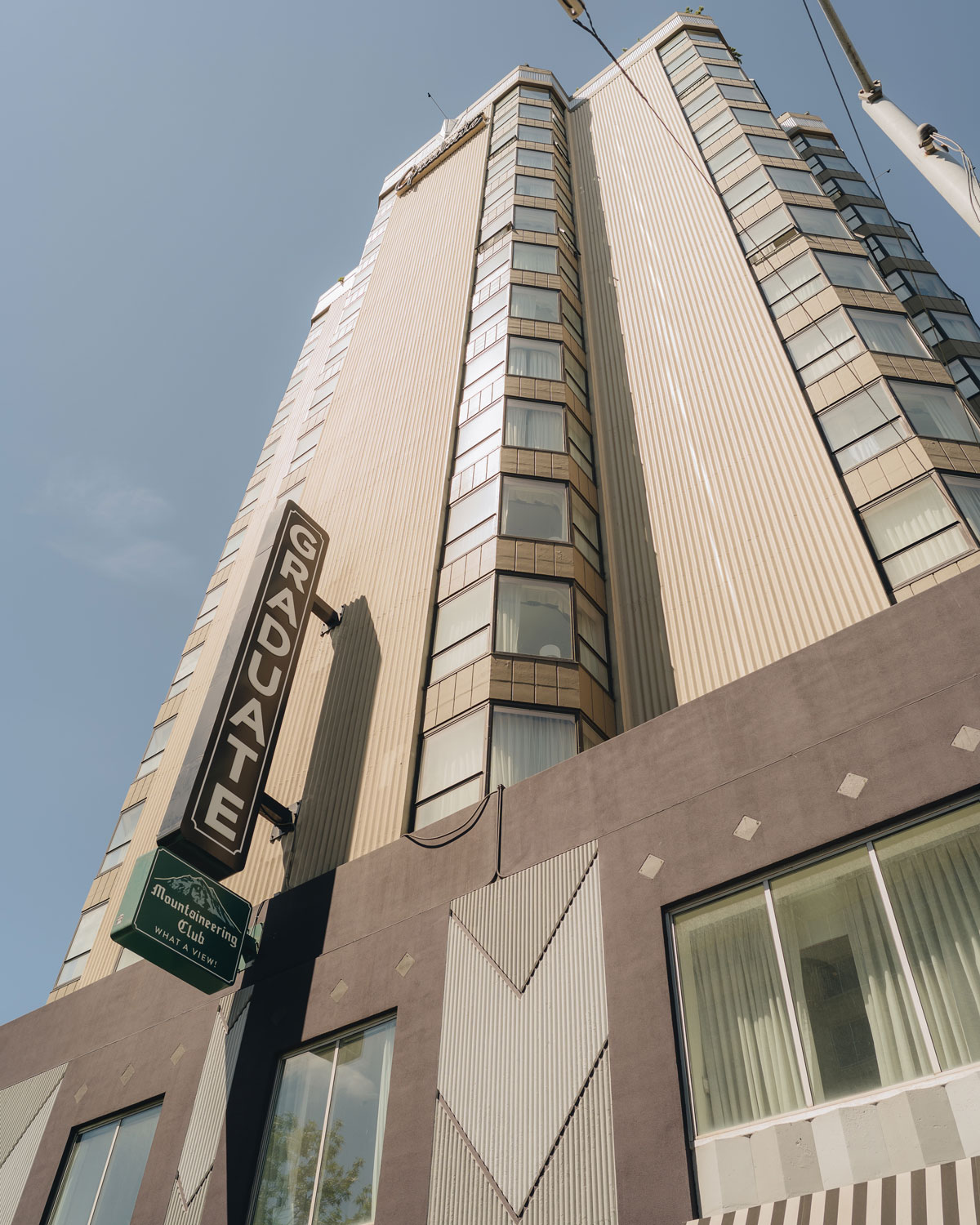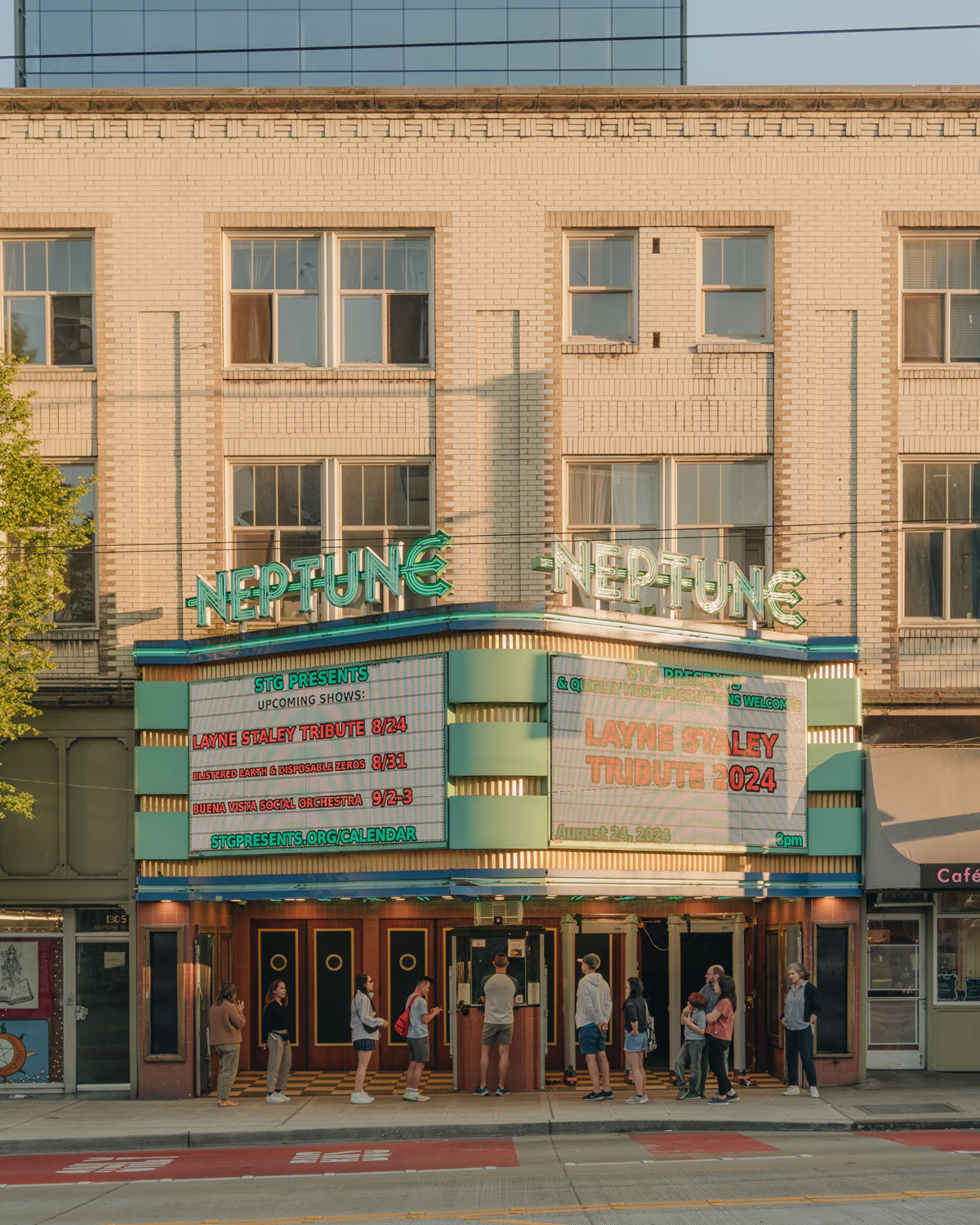Husky Classics Rock Husky Classics Rock Husky Classics Rock
The U District has evolved and grown over the years. These establishments feel almost exactly the same.
By Mike Seely | Photos by Kris Ladera | September 2024
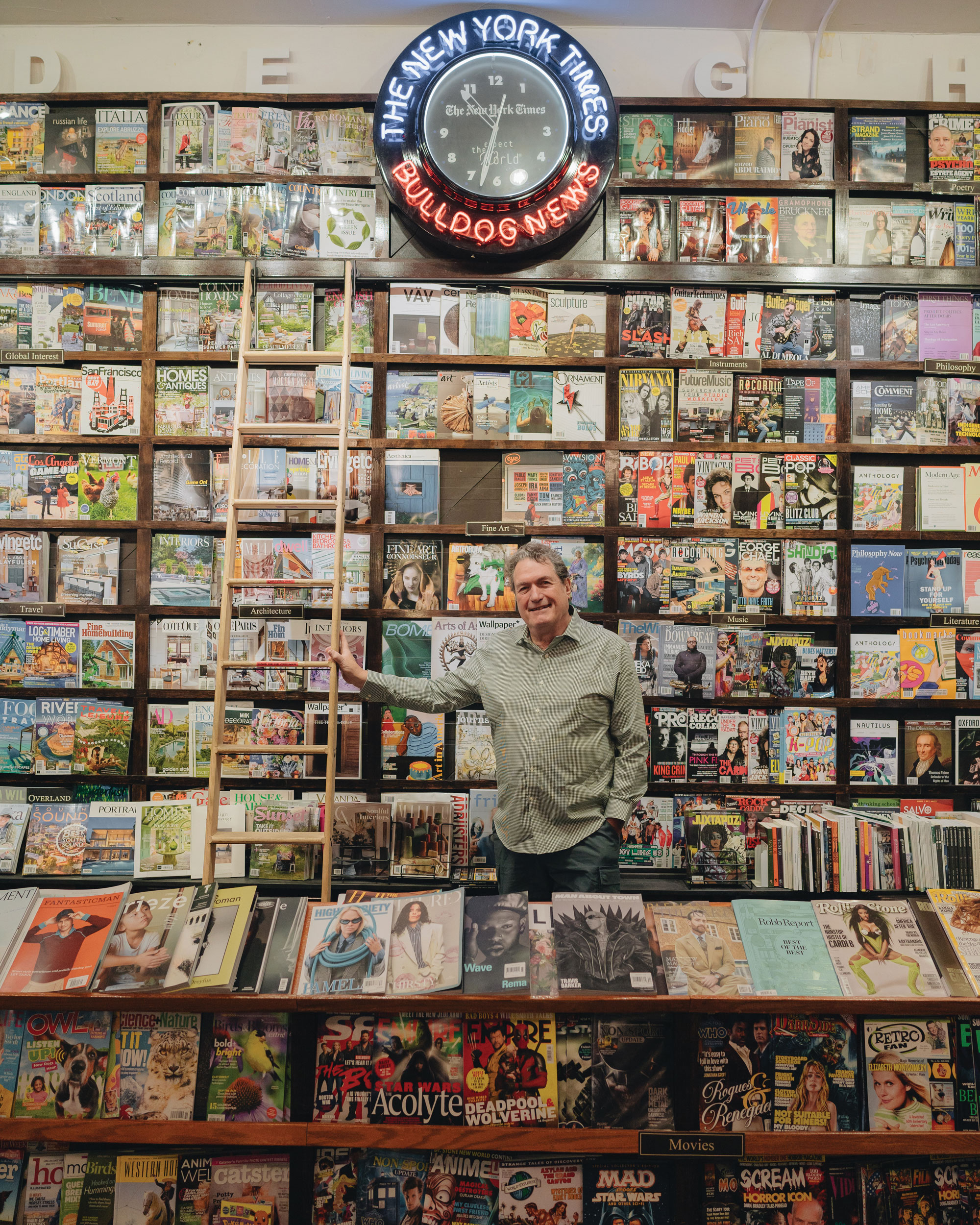
Jen Gonyer is Seattle to the core. She grew up in Southwest Seattle's Arbor Heights neighborhood. Because public-school busing started when she was in elementary school, she was exposed to a wide swatch of the city before that great social and educational experiment came to an end—and before traffic in the area became unbearable.
At about age 16, she began hanging out on University Way Northeast, aka the Ave. But Gonyer, who earned her associate’s degree from North Seattle College and her bachelor’s from Seattle University, wouldn’t attend the University of Washington until graduate school, where she studied medieval literature.
That’s not to say Gonyer shied away from the University District during her undergrad years. One of her favorite haunts was the College Inn Pub, a dungeon-like (in a good way!), subterranean watering hole that functions as the South Pole of the Ave’s business district.
“My husband and I have a history with the pub that goes back 30 years. My husband used to work at the Last Exit,” says Gonyer, referring to the late, great Brooklyn Avenue coffeehouse. “He was there in the late ’80s, and that’s when he started going to the pub. Everyone at the Last Exit went to the pub. It was a very symbiotic relationship.”
- The College Inn Pub was brought back to life by new owners Jen Gonyer and her husband Al Donohue after it closed down during the pandemic.
- The legendary College Inn Pub remains as popular as ever, but Gonyer and Donohue plan to sell the hangout in 2025.
Gonyer first patronized the College Inn in 1992, and then she worked there in 1997 and 1998 before starting grad school in 1999. She continued to visit the pub until 2020, when she and her husband, Al Donohue, became its owners after the bar’s former proprietors abruptly shuttered the space after the onset of the COVID-19 pandemic.
Donohue and Gonyer weren’t the only ones interested in picking up where the College Inn’s previous owners had left off, but they likely got the nod from the building’s landlord because, as Gonyer assumes, “Al and I were very adamant that we didn’t want to change anything.”
Subtle fixes were a must, however, and the couple and their business partners had an entire year to whip the space into shape, seeing as how the UW moved its classes online during the 2020-2021 school year.
“The U District was a ghost town,” she recalls. “There were literally tumbleweeds coming down the Ave. So we just spent all that time doing deferred maintenance that people can’t see.”
The pub, which dates to the early ’70s (the 50th anniversary of its acquisition of a proper business license will be celebrated this September), reopened in August 2021. Immediately, Gonyer, who spent 12 years on campus as a grad student and staffer, concentrated on reconnecting with various university departments and the alumni association, which regularly rent out the bar’s back area, the Snug Room, for catered events.
The walk-in crowd, as always, is varied. Grad students typically trickle in at about 3 or 4 p.m. for an early happy hour, followed by faculty and staff at 5 or 6. Undergrads start to show up around 8 or 9, and after midnight, lingering grad students and staff from other bars are usually the ones left holding court.
The pub—there’s a College Inn Hotel upstairs owned by someone else—is a 21-and-over establishment, so Gonyer is grateful to have another pair of “Ave Classics,” Big Time Brewery & Alehouse and Shultzy’s Bar & Grill, right up the street. Both places have more sophisticated kitchens and allow minors on their restaurant sides, so staffers at the College Inn direct families there should they descend the stairs unawares.
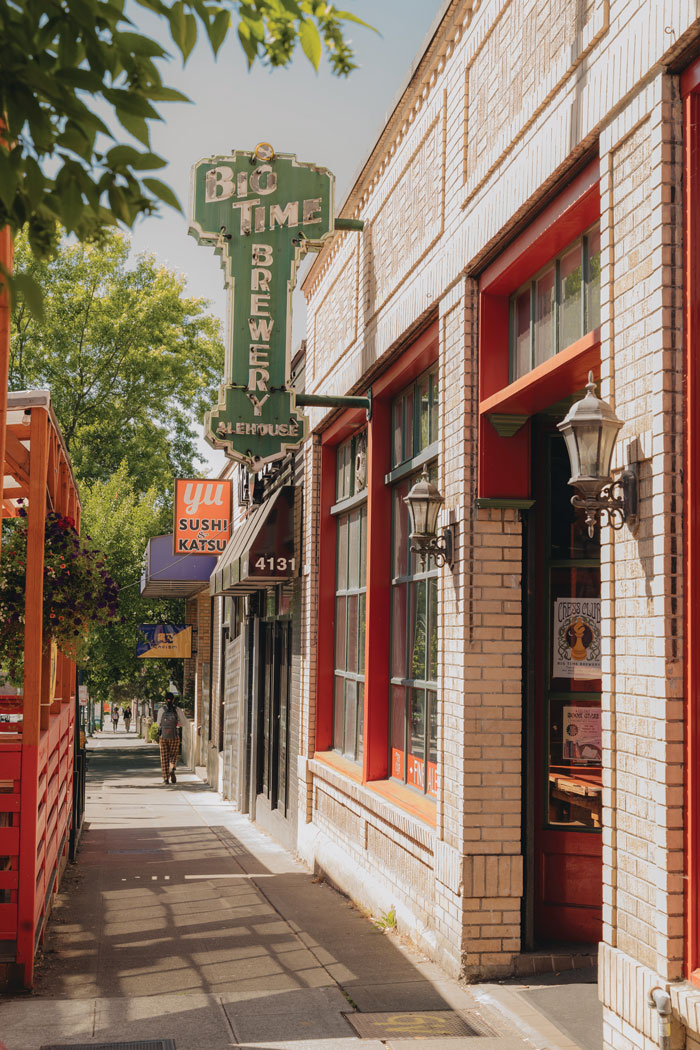
Big Time Brewery, which opened in 1988, continues to be a U District mainstay.
“We tend to think of Big Time and Shultzy’s as the other two points of a triangle with the pub,” says Gonyer. “We do really like having Big Time and Shultzy’s there. We share a lot of the same clientele. Shultzy’s and Big Time have some things that we don’t have.”
And then there’s Earl’s On The Ave, another neighborhood survivor that often sponges up a rambunctious undergrad crowd, allowing its neighbors to sustain a more relaxed vibe.
“Earl’s is an important creature in the ecosystem of the Ave,” says Gonyer. “Those who want to go wild and party and have a crazy good time, they go to Earl’s.”
Further exemplifying how dyed-in-the-wool Seattle Gonyer and her husband are, he’s the president of the Seafair Pirates, and she gets nostalgic when talking about how the city has changed over the decades.
“I could never take my grandchild around and show her the original buildings. Almost everything from our childhood and adult lives is gone,” laments Gonyer, who plans to sell the pub by mid-2025 now that her goal of restoring it has been achieved. “Being from a historical field and knowing the power of touchstones that build community, we saw the power of the pub and decided to give it a shot.”
Thankfully, she is not alone. The Ave and the U District at large have seen their share of changes over the years as Seattle has grown more affluent and prone to gentrification. But there’s something about the Ave that remains distinctly the Ave, thanks in no small part to the likes of the College Inn, Big Time, Shultzy’s, Earl’s, Bulldog News, Cafe Allegro, the Neptune, the Grand Illusion, Red Light Vintage, the Woolly Mammoth, Magus Books, Thai Tom and Gargoyles Statuary—eclectic, long-standing businesses that will ring familiar to many a UW alum returning for a stroll through the neighborhood’s central corridor.
You’re part of that big space
Cafe Allegro, which opened in 1975, is one of Seattle’s oldest espresso bars, while Big Time (established in 1988) was the city’s first brewpub and the Grand Illusion (1970), its first arthouse cinema.
Meanwhile, Bulldog News, founded in 1983 by UW grad Doug Campbell, is Seattle’s longest-running newsstand.
“I had been looking for a place to open a newsstand since the mid-1970s,” says Campbell, who was also the projectionist at the Grand Illusion from 1982 to 1985. “At that time, the Ave was pretty busy. [There were] not a lot of retail spaces.”
Originally operating out of the space now occupied by the Burger Hut, Bulldog has long paired coffee with its collection of hundreds of magazines and newspapers, boasting one of the earliest espresso machines on the Ave. And Campbell makes it clear that Bulldog’s brisk coffee trade, and not its print publications, keeps the business solvent.
“The magazine business as a whole is constantly shrinking,” says Campbell, who counts The New Yorker, Harper’s, Monocle and The New York Review of Books among his business’ more popular titles. “Undergrads are not big magazine customers. Our core audience is people above 50. They probably come to the U District looking for magazines.”
Political magazines and those catering to specific niches—sports card collectors, gear heads, those with an affinity for foreign fashion—also tend to do quite well. Referring to a recent New York Times article about the newfound success of pricey, small-circulation publications, Campbell says, “I think that, in five years, that’s gonna be the strong spine of the magazine business—like people who used to collect National Geographic and have multiyear collections. I think that magazines are going to become more like that—still shrinking in circulation but increasing in quality.”
As for the Ave itself, Campbell, long a political animal, thinks it “should become pedestrianized and not be oriented toward diesel buses and automobiles.” He counts Gargoyles and Magus Books (around the corner from Bulldog) among his favorite businesses, while Big Time is his favorite drinking establishment.
“Rick [McLaughlin], the owner, is a really big-hearted guy,” he says. “His big-heartedness is expressed in the way that place is run all the time. You’re not just at the table you’re sitting at, you’re part of that big space.”
Challenges make it a lot of what it is
When the U District tries something new, it’s often rooted in the old. Take the Mountaineering Club, for instance. A rooftop bar offering craft cocktails and panoramic views atop the Graduate Hotel, it’s probably the poshest business to open in the neighborhood in recent memory. Yet it hardly neglects its roots.
While retaining its classic Art Deco look, the Graduate has been through several name changes since opening as the Edmond Meany Hotel in 1931. Meany was one of Seattle’s most influential and dynamic citizens in the late 1800s and early 1900s, thriving as a journalist, state legislator (he helped secure funding for UW’s present-day campus) and head of UW’s history department. Meany was also president of The Mountaineers, and his influence can be spotted all over various Mountaineering Club features—not the least of which are the mountain ranges visible on a clear day.
- Posh hotel The Graduate has been through several name changes since opening as the Edmond Meany Hotel in 1931.
- Opened in 1921, the building now called Neptune Theatre is a Seattle landmark.
- The 46-year-old Magus Books carries over 70,000 titles.
Sharing the intersection of Northeast 45th and Brooklyn Avenue Northeast with the Mountaineering Club and the Graduate is the Neptune Theatre. In the roaring ’20s, it was a large-capacity movie house; now, Seattle Theatre Group has recast the Neptune as a vital live-music venue while retaining its historic charm. (Movie-theater popcorn is still available for purchase in a cute nod to the ghosts of the venue’s Rocky Horror Picture Show past.)
Dan Reinharz ran the bar program at the Neptune before he became its theater manager in 2014. He held that job for 10 years before a recent promotion, but of his decade at the helm of the U District institution, he says, “I developed a love for the Neptune in the years I was there. It had a very strong family vibe and the people were terrific.
“The Neptune is one of those venues where you get people on their way up and then on the other side of the mountain. It’s especially exciting when you get someone on the way up and they just blow the doors off the place,” adds Reinharz, mentioning Leon Bridges, Lizzo and Jason Isbell.
“We have three venues (Neptune, Moore, Paramount). If we can latch on to an artist early, we can graduate them up through a good portion of their career. After the Paramount, you’re playing arenas.”
Reinharz describes the Neptune’s festival-seating arrangement as “very democratic,” which are two words that could be used to describe the U District as well.
“You can’t talk about the U District without mentioning Thai Tom,” he says. “Earl’s, you got to love and hate it at the same time. Shultzy’s is great, the College Inn is great. The challenges make it a lot of what it is. To me, those are things that you deal with in an urban community.”
